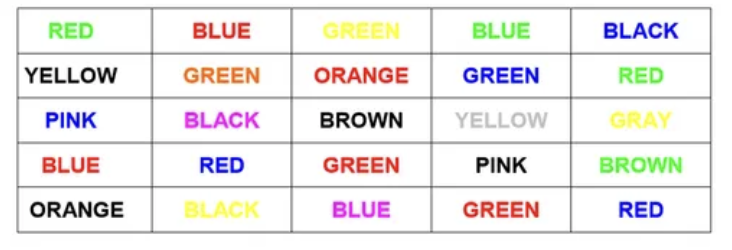schizophrenia
1/43
There's no tags or description
Looks like no tags are added yet.
Name | Mastery | Learn | Test | Matching | Spaced |
|---|
No study sessions yet.
44 Terms
what is schizophrenia ?
mental disorder characterised by hallucinations, delusions, disorganised thinking and behaviour and flat or inappropriate effect
Dr Emile Kraeplin 1887
first diagnosed schizophrenia as “dementia praecox” - early onset dementia
Eugen Bleuler 1911
coined term schizophrenia - means split mind in greek
approx. what % of the population develop schizophrenia ?
1
what individuals are at higher risk of developing schizophrenia ?
men and those with fathers ages 45+ at time of birth
what is the average age of onset for schizophrenia ?
18 - 30yrs Tandon et al. 2009
how does schizophrenia differ in its presentation between genders ?
5-7yrs later onset in women, more severe affective symptoms, less severe negative symptoms and cognitive impairment, lower suicide rates, respond better to treatment
list the common signs and symptoms of schizophrenia
characteristic distortions of thinking and perception
cognitive impairments
motor abnormalities
avolition and apathy
difficulties in communication
restricted affective expression
avolition
total lack of motivation
apathy
lack of feeling or emotion
positive vs negative symptoms
positive - additional experiences eg. hallucinations
negative - take away eg. loss of speech
symptoms can be classified into what 6 groups ?
positive, negative, cognitive, disorganisation, mood, motor
what are the 3 primary diagnosis symptoms
delusions, hallucinations or disorganised speech - must have 1 for diagnosis
what are the 5 DSM-5 diagnosis criteria ?
delusions
hallucinations
disorganised speech
disorganised / catatonic behaviour
negative symptoms
delusions
false beliefs resistant to the truth
hallucinations
disturbances of perception - sensory
catatonia
awake but not responsive
delusions usually focus on…
those close to the person
what is the most common type of hallucination ?
auditory - hearing things
what are the 5 sensory forms ?
auditory, visual, tactile, gustatory, olfactory
what are the 3 types of schizophrenia ?
disorganised
paranoid
catatonic
characteristics of disorganised/hebephrenic schizophrenia
disorganised speech, flat or inappropriate effect, short-lasting delusions and hallucinations, requires ongoing treatment
characteristics of disorganised/hebephrenic schizophrenia
most common, paranoid delusions, auditory hallucinations, catatonic symptoms not prominent
characteristics of catatonic schizophrenia
psychomotor disturbances
prolonged periods of stillness
alternate with hyperkinesis - excessive activity
“wavy flexibility”
vivid hallucinations
what is the concordance rate in MZ twins vs DZ ?
40 to 50% vs 10 - 15
4 biologically based explanations for schizophrenia
genetics, viral infections, complications during pregnancy and birth, excess levels of dopamine in brain
psychosocial explanation for schizophrenia
schizophrenogenic mother - certain mothering style can lead to development of disorder
characteristics of a schizophrenogenic mothering type
cold, over-protective, domineering and rejecting towards children
Freud’s psychodynamic explanation for schizophrenia
anxiety motivated regression
person gives in to overwhelming anxiety
regresses back to early oral stage - between development of ID and ego
Sullivan (1962) psychodynamic explanation
cause of anxiety is damaging mother- child relationship
gradual withdrawal from other people that begins in early childhood
final withdrawal = schizophrenic break
cons of the psychodynamic explanation
lack of evidence
speculative - not empirically testable
unfalsifiable - cannot be proven
individualistic
cognitive explanation
most people able to focus selectively
if not sensory overload experienced - schizophrenia
Frith (1979)
attention deficit theory - believed faulty attention systems to be cause
Bentall’s suggestion that schizophrenics have trouble processing info can be tested using…
Stroop tests - takes longer for schizophrenics

Meyer-Lindenberg et al. (2002)
suggested link between faulty processing and high dopamine
biological treatment
antipsychotics - effective in treating hallucinations and delusions
psychosocial treatment
targets lack of psychological, social and occupational skills
rehabilitation
social and vocational training
self help groups
what was Freud’s opinion on treating schizophrenia ?
cannot be treated
incapable of establishing close interpersonal relationships during adulthood
Sullivans psychodynamic treatment
return to early forms of childhood communication so therapy requires pts to learn adult forms
key is to develop trusting relationship with therapist
evaluation of Sullivan’s treatment
lack of success (Stone 1986)
too intense
Sullivans early pts only had mild forms of the disorder
cognitive treatment
stress management and belief modification
Gould (2001)
statistically significant decrease in positive symptoms after CBT treatment
Kirschen (2006)
of 142 pts most not suitable for CBT - would not engage
what % of schizophrenics commit suicide or attempt
10 and 40